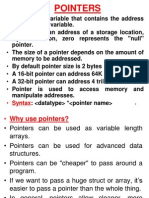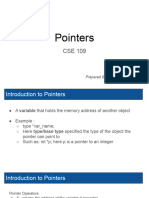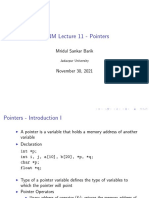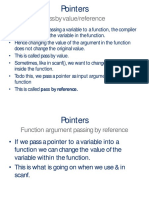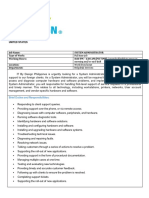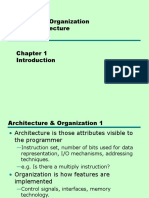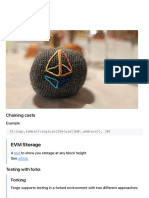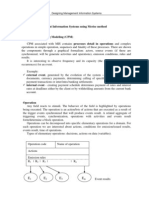0% found this document useful (0 votes)
19 views4 pagesC Pointer Practice Questions Explained
The document provides a series of C pointer practice questions categorized into easy, medium, and hard levels, each accompanied by explanations. It covers fundamental concepts such as pointer declaration, pointer arithmetic, dynamic memory allocation, and advanced topics like function pointers and memory leak detection. Each example illustrates practical applications of pointers in C programming.
Uploaded by
rtzcf5596zCopyright
© © All Rights Reserved
We take content rights seriously. If you suspect this is your content, claim it here.
Available Formats
Download as PDF, TXT or read online on Scribd
0% found this document useful (0 votes)
19 views4 pagesC Pointer Practice Questions Explained
The document provides a series of C pointer practice questions categorized into easy, medium, and hard levels, each accompanied by explanations. It covers fundamental concepts such as pointer declaration, pointer arithmetic, dynamic memory allocation, and advanced topics like function pointers and memory leak detection. Each example illustrates practical applications of pointers in C programming.
Uploaded by
rtzcf5596zCopyright
© © All Rights Reserved
We take content rights seriously. If you suspect this is your content, claim it here.
Available Formats
Download as PDF, TXT or read online on Scribd
/ 4
















